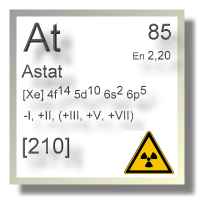


The electrical methods which have hitherto been employed are, however, only successful where a constant source of radiation is available. Bragg has also determined the wave-lengths of the strongest lines in the spectra of nickel, tungsten, and rhodium. Darwin and the author extended this analysis and also examined the continuous spectrum, which in this case constitutes the greater part of the radiation. Bragg, who by this method analyzed the line spectrum emitted by the platinum target of an X-ray tube. The interference phenomena exhibited by X-rays when scatted by a crystal have now, however, made possible the accurate determination of the frequencies of the various types of radiation. In the absence of any available method of spectrum analysis, the characteristic types of X radiation, which an atom emits if suitably exited, have hitherto been described in terms of their absorption in aluminum. The apparent inaccuracy in Mendeleev’s prediction is not too surprising, however, since he never knew that protactinium is a member of only four “pair reversals” in the entire periodic table. The modern atomic weight for eka-tantalum or protactinium is 229.2. Perhaps in the minerals which contain these elements a certain amount of weak acid formed from this metal will also be found. This element should form a highest oxide R2O5, like Nb and Ta to which it should be analogous.
Astatos element series#
Between thorium and uranium in this series we can further expect an element with an atomic weight of about 235. In doing so, Mendeleev added the following paragraph, in which he made some specific predictions. (See figure 1.6.) A couple of years later, he corrected both of these values and showed a missing element between thorium and uranium (figure 4.4). In his famous 1896 paper, Mendeleev indicated incorrect values for both thorium (118) and uranium (116).

The first of the seven final infra-uranium elements to be discovered was protactinium, and it was one of the lesser-known predictions made by Mendeleev. The fact remains that five of these seven elements are radioactive, the two exceptions being hafnium and rhenium, the second and third of them to be isolated. This apparent simplicity is somewhat spoiled by the fact that, as it turned out, some of these seven elements were first isolated from natural sources following their being artificially created, but this raises more issues that are best left to the next chapter of this book. After Moseley developed his X-ray method, it became clear that there were just seven elements yet to be isolated among the 92 naturally occurring elements or hydrogen (#1) to uranium (#92). The present chapter concerns the last seven elements that formed the missing gaps in the old periodic table that ended with the element uranium. The term “infra-uranium,” meaning before uranium, is one that I have proposed by contrast to the better-known term transuranium elements that are discussed in the following chapter.


 0 kommentar(er)
0 kommentar(er)
